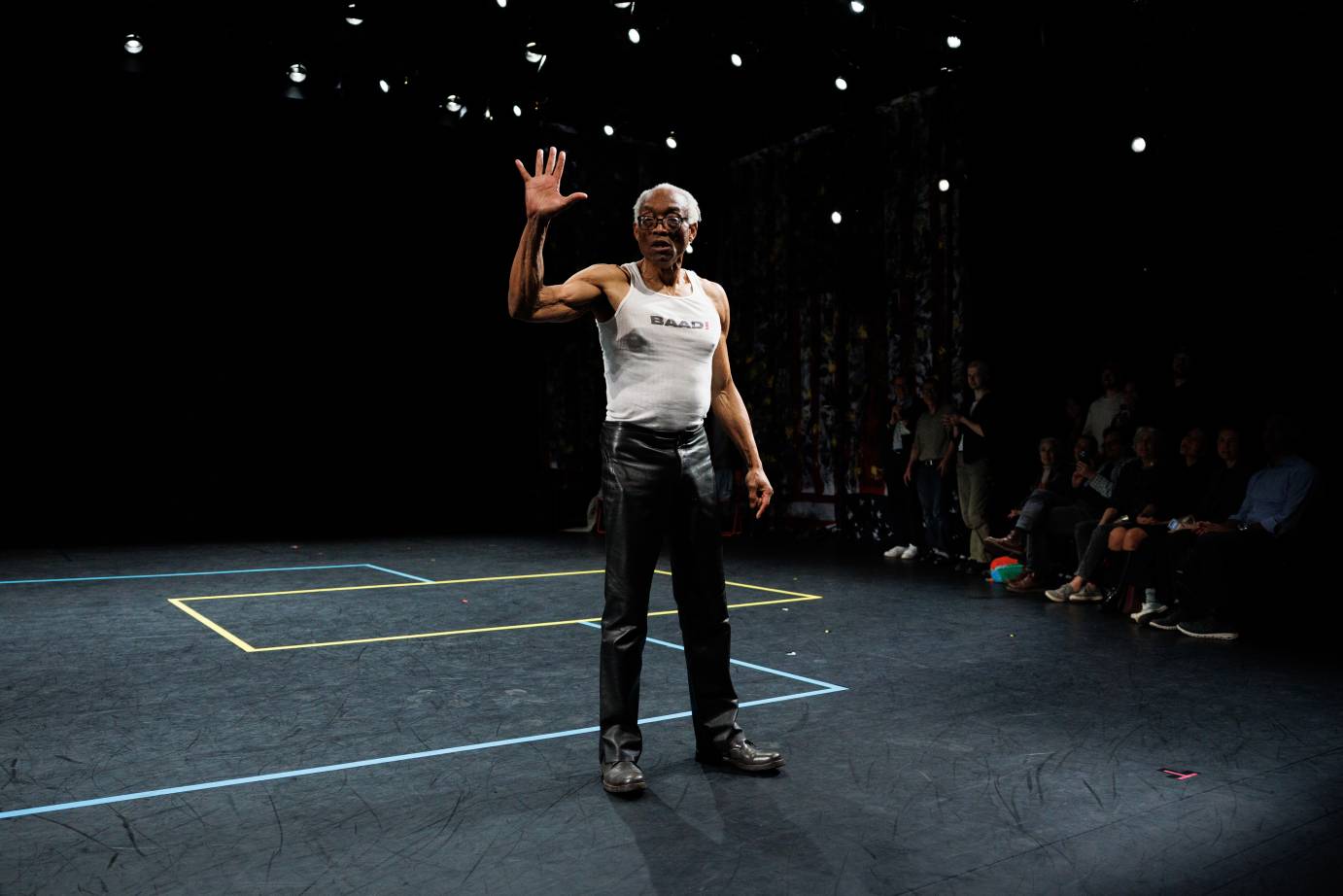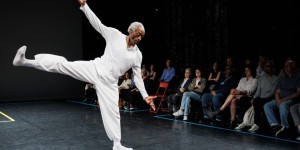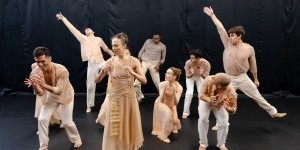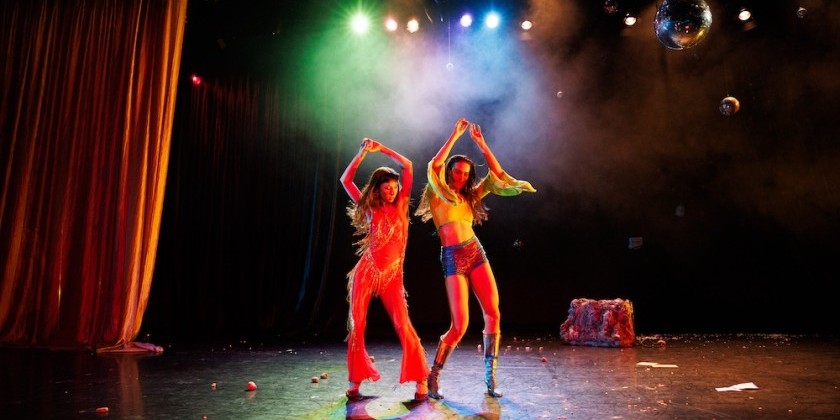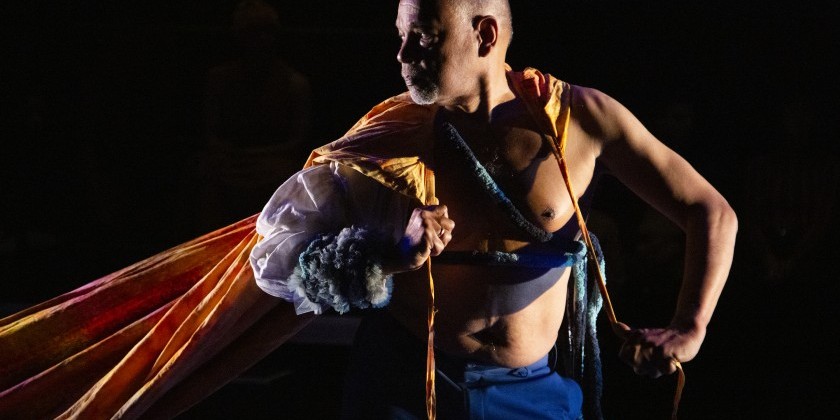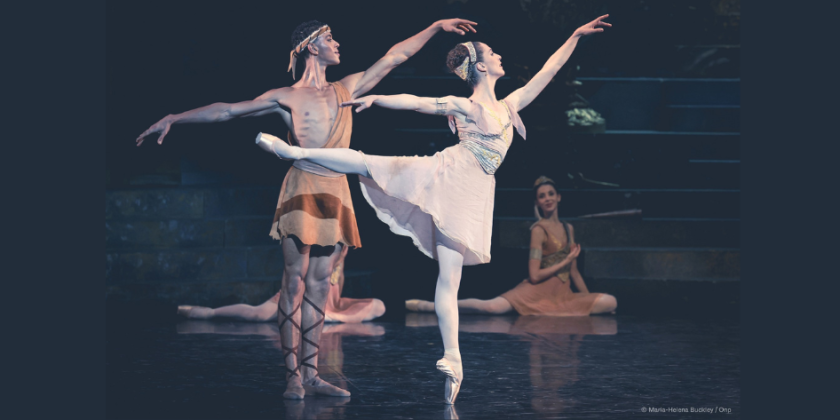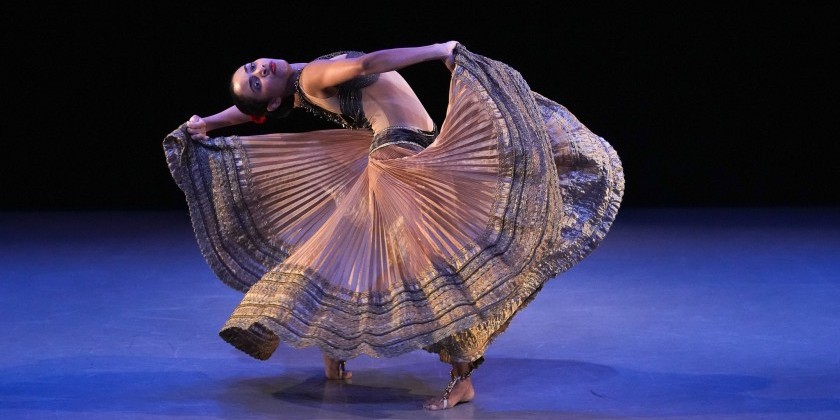IMPRESSIONS: Bill T. Jones in "Curriculum III: People, Places & Things" at New York Live Arts
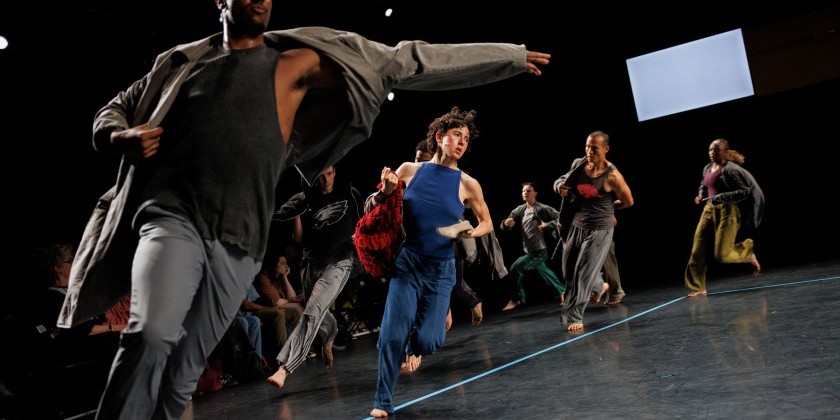
Bill T. Jones/Arnie Zane Dance Company
Curriculum III: People, Places, & Things
Conceived and directed by Bill T. Jones
Choreographed by Bill T. Jones with Janet Wong and the company
Performed by Barrington Hinds, Jada Jenai, Shane Larson, Danielle Marshall, Jacoby Pruitt, Philip Strom, Hannah Seiden, Mak Thornquest, Rosa Allegra Wolff, and Huiwang Zhang
Lighting design by Robert Wierzel | Costumes by Liz Prince | Video design by Janet Wong
Sound created & composed by David Van Tieghem | Original soundscape created by John Oswald
Décor by Bjorn Amelan and Liz Prince in collaboration with Bill T. Jones | Acting coaching by William DeMeritt
Additional musical excerpts from: I’ll Fly Away by Gillian Welch and Alison Krauss, Just Like Tom Thumb’s Blues by Bob Dylan, Keep on Pushing by The Impressions, Ursonate by Kurt Schwitters performed by Christopher Butterfield, Original text written by the performers
May 15 - 24, 2025
By a curious coincidence, the same spring season in which the Martha Graham Dance Company revived Deaths and Entrances, a testament to the inspirational power of memory, also featured two dances by choreographer Bill T. Jones in which memory plays an essential role.
In his solo show from last year, Memory Piece: Mr. Ailey, Alvin… the un-Ailey, Jones reviews his complicated relationship with the late Alvin Ailey. The season premiere, Curriculum III: People, Places, and Things, is more ambitious, attempting to define “American-ness” through memories of immigration. The Bill T. Jones/Arnie Zane Company unveiled Curriculum III at New York Live Arts on May 15, 2025.
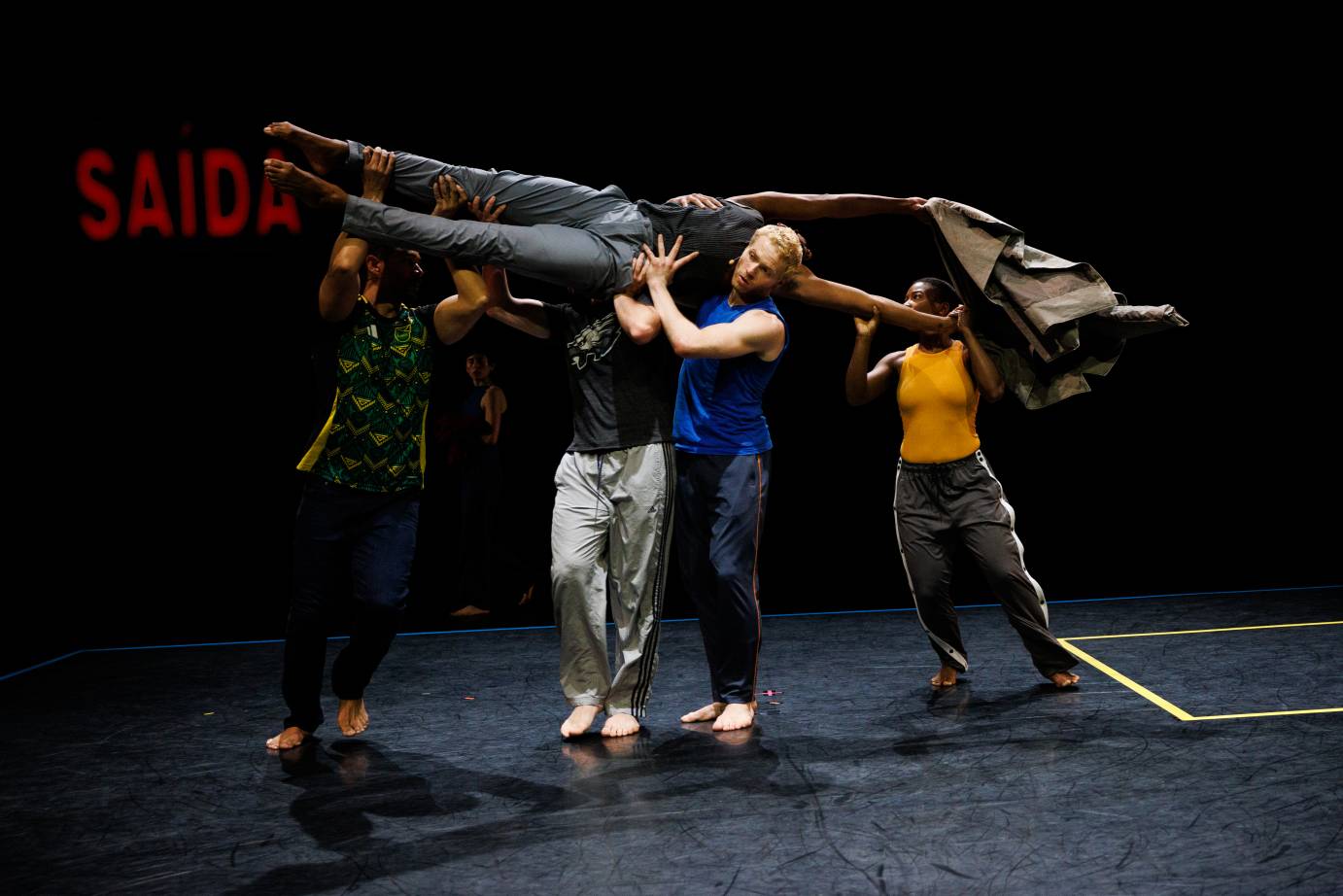
Clearly a response to the recent spate of deportations and the closing of the U.S. Southern border, Curriculum III reminds us that we all come from someplace else. At its core is a series of monologues in which the company’s diverse cast of dancers respond to the question, “Where are you from?” by tracing their ancestry to a more or less distant forebear who took a chance and came to the USA. These stories humanize immigration, and make it personal. In Cabo Verde, in the early 1900s, Jacoby Pruitt’s great-great-grandfather left the house one day to buy a loaf of bread, and mysteriously vanished only to resurface in Boston. Mak Thornquest’s great-great-great grandfather was born at sea, in the 1890s, as his widowed mother braved the crossing alone. Hannah Seiden’s family escaped the Holocaust (some of them) by fleeing to America; and, during the Revolutionary War, Philip Strom’s ancestor, a Hessian mercenary, saw the wisdom of switching to the American side. Like Barrington Hinds’ Jamaican parents, many came seeking economic opportunities and a “better life.”

Almost all the dancers speak of their families with affection, and even those who confess estrangement or harbor doubts find something to be proud of in an ancestor’s courage or resilience. They claim these family histories as their own, and while each story is different, the dancers (all but one) assert a common identity: “I am an American.” The single exception, Chinese dancer Huiwang Zhang, is on the path to American citizenship, and in his monologue he asks the audience if we will accept him as one of us.
These dancers are singularly attractive, and their stories are heart-warming, since even the most diffident tells a tale of survival. The risk, in fact, is that Curriculum III will lapse into teary-eyed sentimentality. To avoid passing the Kleenex, Jones embeds the narrative in a complex mise-en-scène that combines limpid pure-dance passages, physical drama, still photography, live-cam footage, an eclectic playlist, and vocals. These elements are seamlessly integrated, and manage to engage all our faculties without distracting from the focus of each scene.
.jpg)
The most effective devices are those that threaten to cast a pall over the dancers’ stories. A lurid “Exit” sign, which reappears in various languages, is the opposite of welcoming. To one side, American flags hang splattered with dirt and covered with ghostly hand-prints. In a recurring episode, the dancers gather informally with their luggage, like passengers at an airport. Sometimes they proceed calmly, chatting with companions, and helpfully offering directions to strangers. Another time, the group moves cautiously projecting forced smiles at the audience. Yet again, they tear around the perimeter in a struggling mass, their possessions torn away and ejected. Some voyages are more desperate than others. In the opening scene, a drone appears hovering ominously above the dancers as they slither across the floor in darkness, wearing hoodies that conceal their faces. This drone is easily disabled — not so the global surveillance state that grows more intrusive every year.

Curriculum III makes a good case for pride in America’s diversity, and demonstrates the central role of immigration in the American experience. Yet this sophisticated production manages to oversimplify its subject. It does not address the problems, such as human trafficking, criminality, and economic competition, that made immigration a hot-button issue in the 2024 presidential election. Finally, Curriculum III degenerates into a political rant. The word “No!” has cropped up sporadically, sometimes spoken in answer to a simple greeting. At the end, “No!” becomes a chorus of resistance, with Jones himself rushing on stage and shouting as he attempts to whip up the crowd. Weirdly, this ending recalls the futile protest of post-modern icon Yvonne Rainer in her No Manifesto (“NO, to spectacle! No, to virtuosity!”), which Jones cites in his solo program this season. With populism on the rise, Jones’s “No!” has as much chance of stopping the MAGA movement, as Rainer’s manifesto had of stopping Dancing with the Stars.
